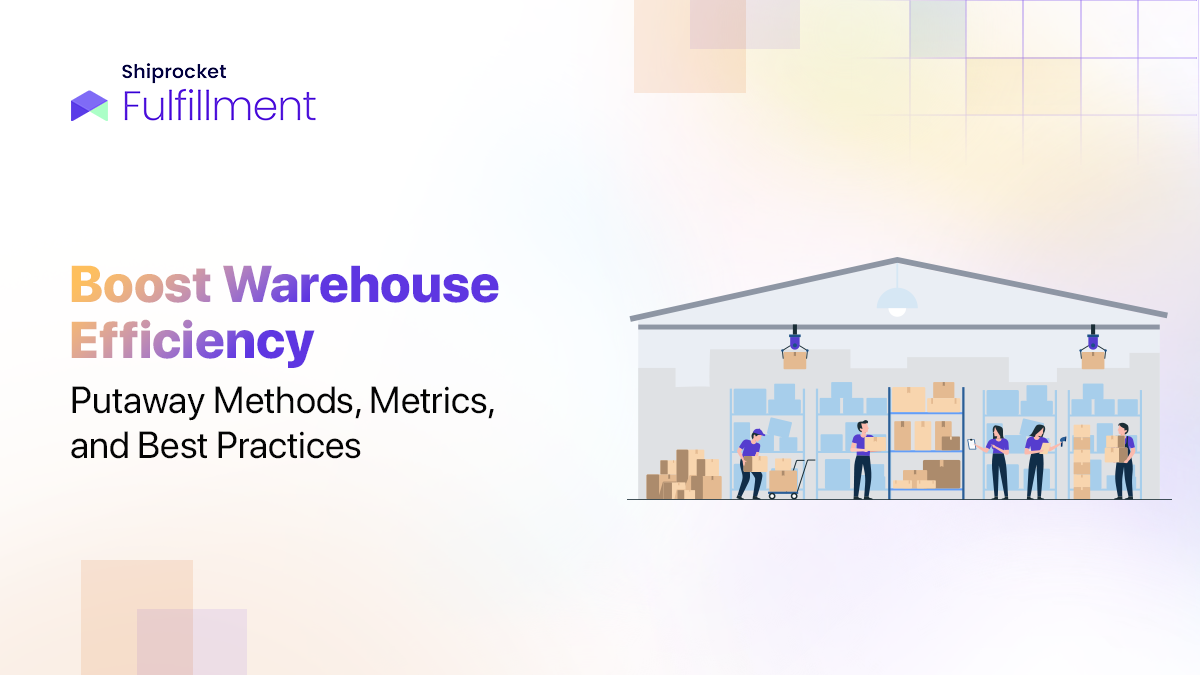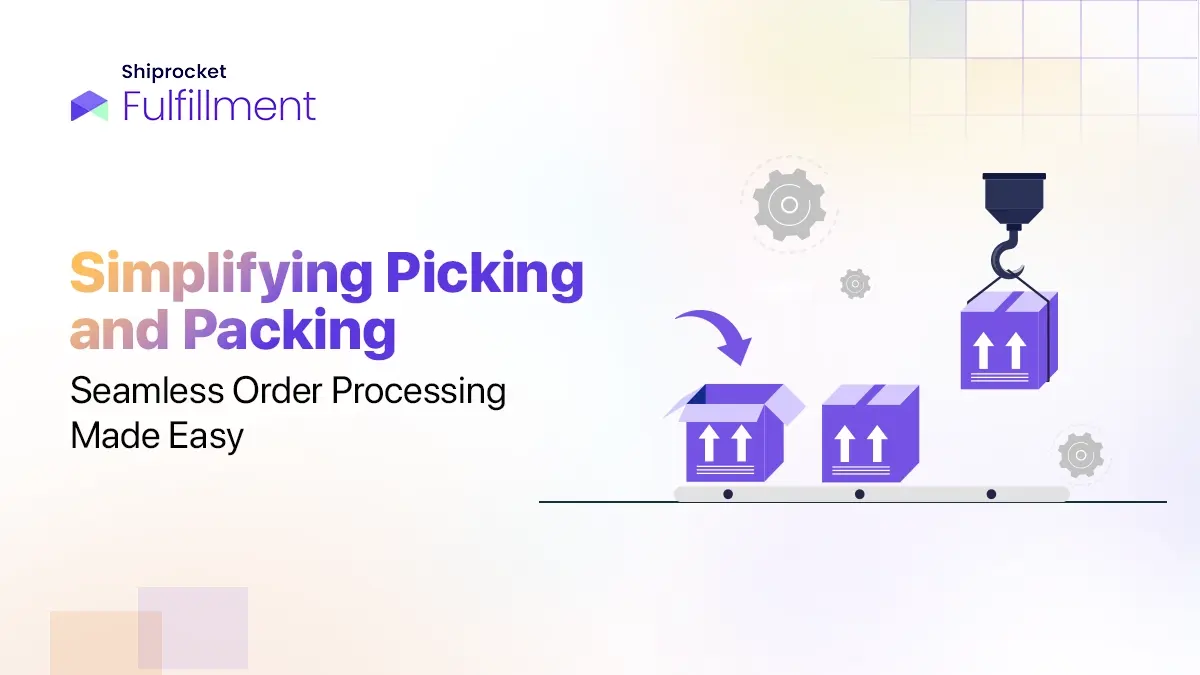Warehouse logistics has become one of the primary drivers for eCommerce businesses to serve their customers on time. The strategy has had great ROI since logistics can be designed to meet the objectives of the business as a supplier and the demands of the buyers simultaneously. Hence it has become a key differentiator for online businesses allowing them to manage the inventory, order processing, and shipment of products to customers. Warehouse logistics and advanced automation has changed the way businesses can gain a competitive edge.

According to industry analysts, the Indian warehouse market in 2022 was dominated by third-party logistics providers holding 29% of the market. The size of the market is expected to expand to USD 20 billion by 2025.
But setting up a warehouse and maintaining it is a challenge for every business. So here are some ways in which third-party service providers can serve your business’s warehouse logistics needs.
To understand warehouse logistics, we must grasp the concept of logistics and warehousing.
Logistics refers to the planning, organization, management, and execution of complex operations. In warehousing, logistics involves the movement of physical goods and information.
What is Warehouse Logistics?
Warehouse logistics involves managing all the factors required for warehousing, including organization, transport, and management of physical inventory, knowledge, and time. It also covers tasks like pest control, damaged goods handling, safety policies, human resources management, and customer returns. Warehouse logistics involves policies, procedures, and organizational tools to ensure efficient operations.
Typical Warehouse Requirements
Warehouse logistics requirements may vary depending on the specific needs of the business or industry. Common requirements for warehouse logistics include:
- Adequate storage space
- Efficient inventory management systems
- Streamlined order processing and fulfillment
- Effective transportation and shipping management
- Skilled and trained warehouse staff
- Adherence to safety and regulatory standards
- Integration with e-commerce platforms and other systems
- Real-time tracking and visibility of inventory and orders
- Optimization of picking, packing, and shipping processes
- Use of technology and automation for increased efficiency and accuracy
Considering the wide-range of requirements to set up warehouse logistics and maintain it, most organizations are switching to service providers.

What are the Challenges of Warehouse Logistics?

Warehouse logistics poses several challenges. The primary challenge is maintaining precise control over a large warehouse. Warehouse managers must locate specific items, pallets, and trucks, which is crucial for smooth operations and revenues. The warehouse’s challenges also extend to inventory management, supply chain management, cost controls, human resources, risk management, and security. Balancing flexibility, customer satisfaction, and possession is critical to stay competitive.
Advanced warehouse management systems (WMS) provide real-time insight into warehouse operations and equip employees with the necessary tools for effective and profitable warehouse management. WMS is a must-have for warehousing as it manages all warehouse logistics, from inventory control to order fulfillment. Modern WMS incorporates mobile tools, enabling warehouse managers and employees to consult the system via smartphones.
However, human error can hinder the effectiveness of even the most potent WMS. Warehouse considerations heavily influence logistics, requiring well-trained managers and employees who understand the equipment and WMS. Transportation, 3PL, and related contractors and suppliers must coordinate with logistics efforts. Any changes to warehousing, such as new racking or updated organization, must be incorporated into the system to prevent problems since warehouse logistics are dynamic, watchfulness, proper training, and evolving policies are necessary for smooth operations.
To overcome challenges of warehouse logistics and ensure business productivity, using services of third party service providers is very important:
Benefits of Warehouse Logistics Providers
Warehouse logistics providers offer a range of services that help businesses manage their supply chains and improve their logistics operations. Here are some common features of warehouse logistics providers:
1. Warehousing Facilities
Warehouse logistics providers typically offer a range of warehousing facilities with adequate storage space and infrastructure. This may include temperature-controlled, racked, and other specialized storage options.
2. Inventory Management
An essential feature of warehouse logistics providers is their ability to offer inventory management services. This includes tracking, managing, and monitoring stock levels and locations in real-time using advanced inventory management systems.
3. Order Fulfillment
Another crucial feature is order fulfillment services. This involves picking, packing, and shipping products to customers, using efficient and streamlined processes that can help reduce errors and improve customer satisfaction.
4. Transportation Management
Warehouse logistics providers also offer transportation management services to coordinate inbound and outbound shipments. This may involve managing freight carriers, consolidating shipments, and arranging for last-mile delivery to customers.
5. Real-Time Tracking and Visibility
Modern warehouse logistics providers offer real-time tracking and visibility of inventory and orders using advanced technology and software platforms. This allows businesses to monitor their inventory and orders at every stage of the supply chain, enabling better decision-making and more efficient operations.
Thus, the common features of warehouse logistics providers reflect their ability to provide end-to-end supply chain solutions that help businesses streamline their operations, reduce costs, and improve their overall efficiency.
Tips to Improve Warehouse Logistics Efficiency
As discussed, efficient warehouse logistics is critical for businesses to meet their customer demands, reduce overall costs, and increase business productivity. By implementing the right warehouse logistics strategies, you can streamline your business operations and achieve optimal performance.
Optimise Warehouse Layout and Design
The layout and design of the warehouse play a crucial role in enhancing the overall logistical efficiency. Ensure that the floor plan maximises available space and promotes smooth process flows. You must strategically organise high-demand products near the shipping area for easy access. You can also implement clear signage and labelling to minimise errors and reduce time wasted searching for items. Besides, you can consider regularly evaluating your layout and making changes as per changing demands.
Leverage Technology
Utilise technology to streamline your warehouse operations. Consider using Warehouse Management Systems (WMS) that offer real-time inventory visibility, order tracking, and automated data entry. You can also adopt technological advancements like barcode or RFID scanning for accurate inventory management. Many warehouses are also implementing automation technologies such as conveyor systems, robotics, and Automated Guided Vehicles (AGVs) to speed up picking, packing, and shipping processes.
Embrace Data Analytics
You can leverage data analytics to gain insights into your warehouse operations. Monitor Key Performance Indicators (KPIs) such as order fulfillment time, inventory turnover, and labour productivity. Data analytics will help analyse historical data to identify patterns, bottlenecks, and areas for improvement. You can use predictive analytics to forecast demand accurately and optimise your inventory levels. Data-driven decisions are well-informed decisions that can reduce inefficiencies and optimise your logistics processes.
Implement Inventory Management Strategies
Maintaining optimal inventory levels is also crucial for efficient warehouse management. You can consider utilising Just-in-Time (JIT) inventory management to reduce excess stock and minimise storage costs. Employ ABC analysis to prioritise high-value items and allocate appropriate storage space. You can also employ Vendor Managed Inventory (VMI) program to enhance collaboration and reduce lead times.
Streamline Order Fulfillment Processes
Timely order fulfillment is a key aspect of warehouse logistics. You must implement efficient picking and packing strategies, like batch picking or zone picking, to minimise operations time. You must also utilise order batching and wave-picking strategies to optimise picking efficiency. Standardise packing processes to ensure consistency and minimise errors.
Continuous Improvement and Training
Encourage a culture of continuous improvement within your warehouse. You must regularly assess the processes and lookout for opportunities to improve. You can also involve your employees in identifying bottlenecks and implementing efficient solutions. However, for this to happen, you must provide training programs to equip your staff with the necessary skills and knowledge. You can drive efficiency and enhance warehouse logistics by focusing on continuous improvement.
Conclusion
Efficient warehouse logistics is a critical component of any e-commerce business. By partnering with a top warehouse logistics provider in India, businesses can gain a competitive edge and improve their customer experience while saving on operational costs. Shiprocket offers a range of services for e-commerce businesses, including warehousing, order fulfillment, and shipping. Their order fulfillment services include picking, packing, and shipping products to customers. Its advanced technology, including RFID scanners and barcode readers, ensures accurate inventory management.

Frequently Asked Questions(FAQs)
Warehouse logistics refers to the management and coordination of the various operations involved in warehousing and distribution, including inventory management, order processing, and shipping. It is essential for businesses to optimise their warehouse logistics operations to improve efficiency, reduce costs, and enhance customer satisfaction.
Shiprocket 3PL provides seamless integration with leading e-commerce platforms such as Shopify, Magento, and WooCommerce. The platform offers pre-built integrations that enable businesses to easily connect their online stores with Shiprocket’s warehouse and distribution network to manage their orders and shipments from a single dashboard.
Shiprocket 3PL supports a wide range of warehouse types, including ambient temperature storage, temperature-controlled storage, and hazmat storage. The platform also offers fulfillment services for small and medium-sized businesses, with storage capacity ranging from a few hundred square feet to several thousand square feet.
Any business dealing with storing and moving goods can benefit from using warehouse logistics providers. This includes manufacturers, distributors, wholesalers, retailers, and e-commerce businesses. By outsourcing their warehousing and distribution needs to a third-party logistics provider, these businesses can focus on their core competencies while leaving the complex logistics operations to the experts. This can result in cost savings, improved efficiency, and better customer satisfaction.





